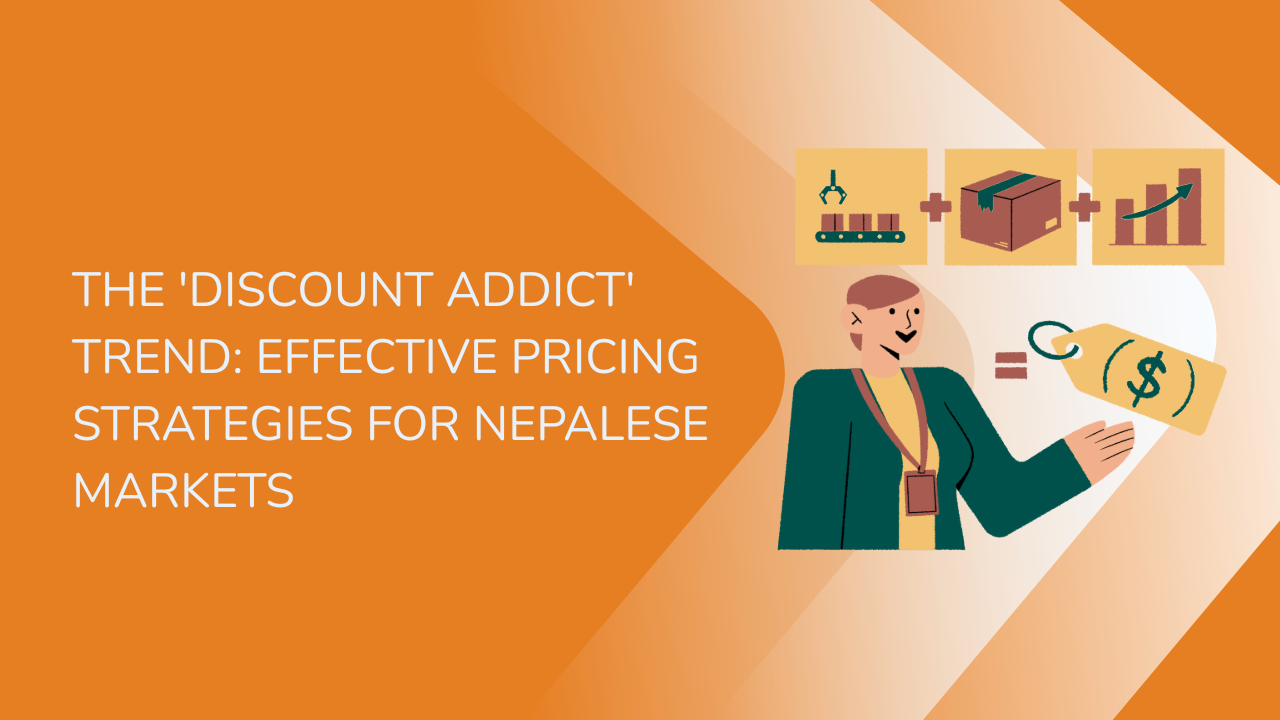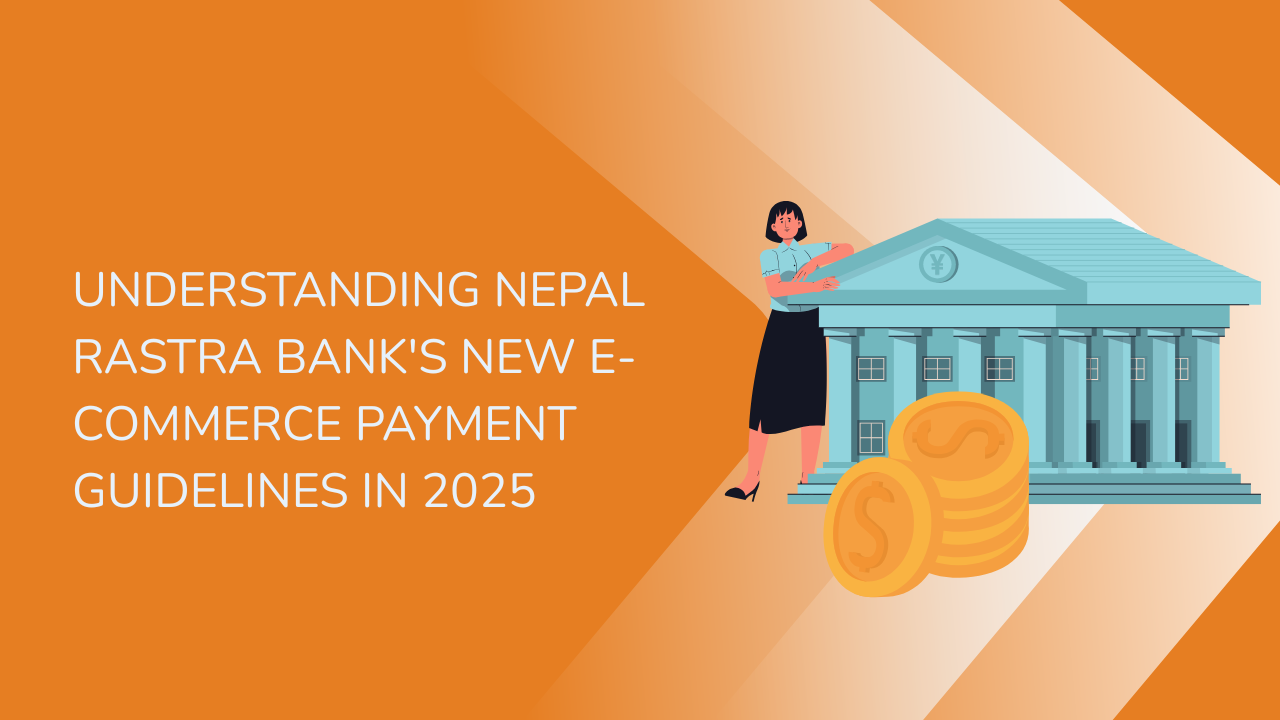Share this Article
In Nepal, a growing consumer trend known as the "discount junkie" phenomenon is reshaping retail and e-commerce pricing strategies. This term refers to a segment of shoppers who are constantly on the lookout for discounts, deals, and promotions. As competition intensifies in the market, understanding this trend and adapting pricing strategies to cater to it has become essential for businesses in Nepal.
The Rise of the Discount-Obsessed Shopper
Nepali consumers, especially in urban areas like Kathmandu, have become accustomed to frequent discounts and deals. With the rise of e-commerce and retail sales events such as "Shree Panchami," "Bikram Sambat New Year," and "Dashain offers," many customers now expect periodic price reductions on products. This expectation has led to a larger consumer base that actively seeks discounts, often prioritizing lower prices over brand loyalty or product quality.
The rise of social media and online shopping platforms has further fueled this trend. Companies often use flash sales, time-limited offers, and heavy discounts to attract customers, which only reinforces the behavior of discount-seeking shoppers. As a result, businesses face the challenge of balancing profitable pricing with consumer demand for frequent bargains.
Why Are Nepali Consumers Attracted to Discounts?
The discount junkie trend in Nepal is partly driven by the economic climate and consumer behavior. Many Nepali shoppers are highly price-sensitive, influenced by budget constraints and the prevalence of bargain-hunting culture. With the economy in a steady phase of growth, consumers are still cautious with their spending, looking for opportunities to get more value for their money.
Additionally, the appeal of discounts is amplified by the increasing competition among businesses. Retailers and e-commerce platforms often advertise deep discounts to attract traffic and increase sales volumes, making it harder for consumers to ignore such offers. Consequently, a significant portion of the population has come to associate lower prices with smart purchasing decisions.
Impact on Businesses and Pricing Strategies
For businesses in Nepal, catering to discount junkies can be both an opportunity and a challenge. On one hand, offering discounts can increase foot traffic, online visits, and overall sales. On the other hand, businesses must ensure that discount strategies do not erode profit margins or damage brand perception.
In order to stay competitive, many businesses in Nepal are adopting aggressive pricing strategies, including the following:
1. Seasonal Discounts and Flash Sales
Many businesses organize sales events around festivals or special occasions. For example, major holidays like Dashain, Tihar, and New Year’s are prime opportunities to introduce limited-time offers that align with the "discount junkie" mentality. Flash sales, where products are offered at steep discounts for a very short time, have become a popular tool to attract customers and create a sense of urgency. However, businesses need to be cautious not to overuse these strategies, as constant promotions could lead to discount fatigue among consumers.
2. Bundle Deals and Value-Added Promotions
Instead of offering deep discounts on individual items, many businesses in Nepal have turned to bundling products together. By offering packages at a reduced price, companies can encourage consumers to buy more while maintaining profitability. For example, a shop might offer a bundle deal of skincare products or a combo of food items at a discounted price, creating the perception of increased value without drastically slashing individual product prices.
3. Loyalty Programs
Loyalty programs have gained popularity as a more sustainable way to manage the discount-seeking behavior. By offering customers discounts or points for repeat purchases, businesses can retain customers while still rewarding them for their loyalty. This strategy not only promotes repeat business but also gives companies more control over how and when discounts are offered.
4. Flash Discount Offers for First-Time Shoppers
Another common approach is to offer exclusive discounts to first-time customers, encouraging them to make an initial purchase. This strategy is particularly effective for e-commerce stores trying to build a customer base. By offering a limited-time discount for new users, businesses can motivate them to complete a purchase and potentially return for future orders.
5. Price Skimming for Premium Products
While discounts are a go-to strategy for many retailers, businesses selling premium or high-end products can consider a price skimming strategy. This involves setting a higher initial price for new products and offering discounts gradually as the product reaches the end of its lifecycle. This allows companies to target different consumer segments and maximize their profits over time.
Balancing Discounting with Brand Value
While offering discounts can be an effective way to boost sales, businesses must be cautious not to undermine their brand's perceived value. Constant discounting can lead customers to expect low prices all the time, potentially diminishing the brand's premium perception. Companies must strike a balance between offering attractive deals and maintaining their brand identity.
It’s essential to communicate the value of the product and the quality behind it, rather than simply relying on price reductions to drive sales. Businesses should focus on building long-term customer loyalty and offering products that provide intrinsic value, so customers are willing to pay a premium without always expecting discounts.
Creating a Sense of Urgency and Scarcity
To further incentivize shoppers to act quickly, many businesses use urgency tactics in their promotions. Limited-time offers, countdown timers, and low-stock notifications can encourage "discount junkies" to make a purchase right away, rather than wait for a better deal. This sense of urgency plays on consumers' fear of missing out (FOMO), motivating them to complete transactions faster.
Monitoring and Analyzing Consumer Behavior
For businesses to optimize their pricing strategies, it’s important to continually analyze consumer behavior and adjust accordingly. Regularly tracking which products are most popular during discount periods, understanding what types of promotions resonate with specific demographics, and experimenting with different pricing models can help businesses tailor their strategies for maximum impact.
For example, offering personalized discounts based on consumer purchase history can boost conversion rates and drive repeat purchases. This level of data analysis and consumer insight can help businesses move away from blanket discounts and adopt more targeted, effective pricing strategies.
Conclusion
The "discount junkie" trend in Nepal is reshaping how businesses approach pricing and promotions. As consumers continue to seek deals and lower prices, companies must find a way to offer value while ensuring profitability. By adopting strategic pricing techniques, such as seasonal sales, bundle deals, loyalty programs, and targeted discounts, businesses can engage with Nepali consumers and tap into the discount-driven mindset while preserving their brand value and margins. Through careful planning and analysis, businesses can thrive in a market that increasingly values discounts but also demands quality and consistency.
Categories:
E-commerce Tips & Tutorials
,
Marketing & Growth
,
SEO & Content Marketing
,
Beginner’s Guides
,
Sales & Conversion
,
Success Stories & Case Studies
,
Platform Features & Updates
Tags:
Online Store in Nepal
,
5 Simple Steps
,
local businesses
,
e-commerce app
,
Small Business
,
strong brand
,
E-commerce







